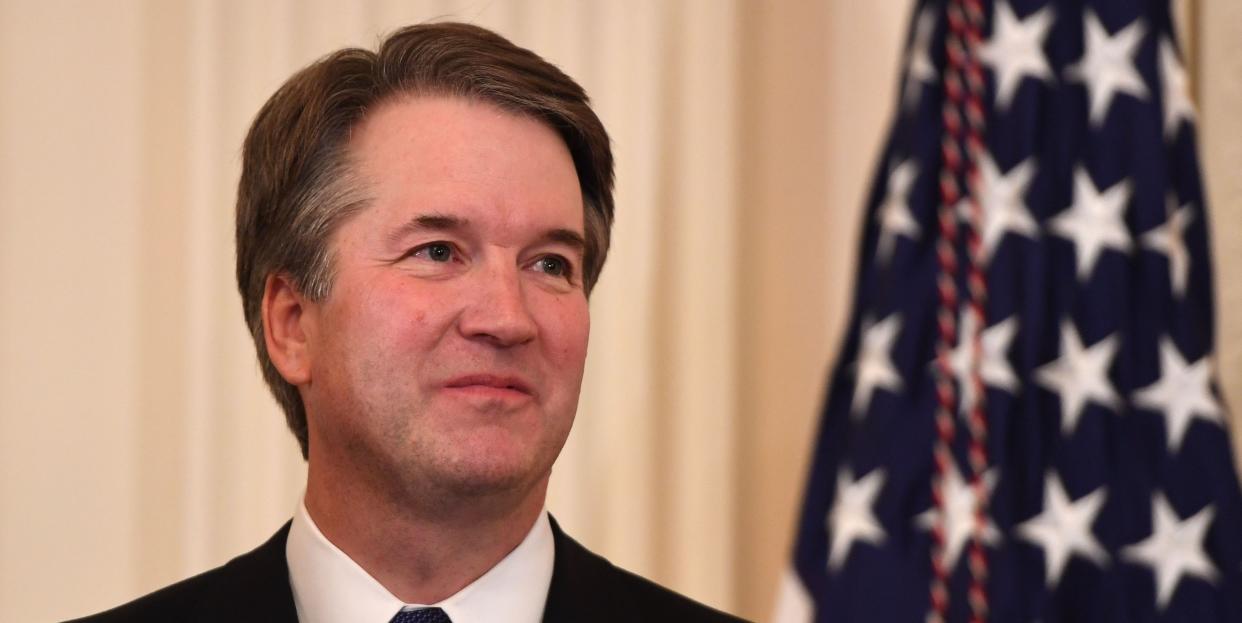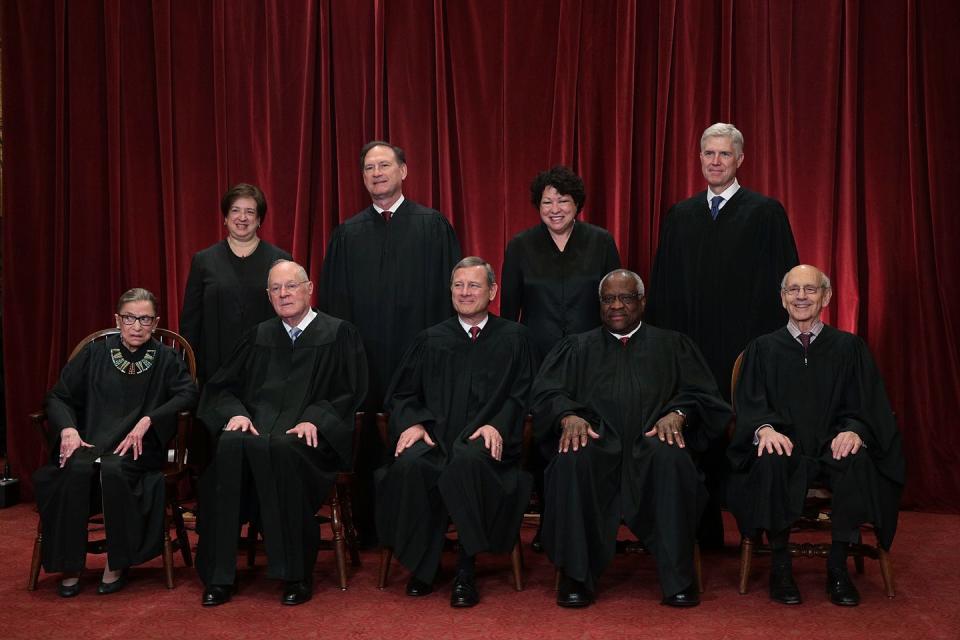With Brett Kavanaugh on the Court, Every Single Justice Will Have Attended Harvard or Yale

On Monday night, President Trump nominated Judge Brett M. Kavanaugh to fill Justice Anthony M. Kennedy’s seat on the Supreme Court. The 53-year-old is now federal appeals court judge in Washington, D.C., and if confirmed, he will continue the convention of every justice having attended two of our country's most elite law schoools.
Kavanaugh graduated from Yale Law School, just like Clarence Thomas, Sonia Sotomayor, and Samuel Alito. John Roberts, Anthony Kennedy, Steven Breyer, Elena Kagan, Neil Gorsuch, and Ruth Bader Ginsburg all attended Harvard Law School (Ginsburg enrolled at Harvard, but ultimately transferred to Columbia when her husband got a job in New York City).

The appointment of yet another Yale grad begs the question: Does it matter that all of our justices went to the same two, rarified law schools?
Harvard and Yale certainly rank as two of the nation’s finest law schools, but that doesn't mean that there aren’t other excellent law schools around the country. Constitutional scholar Erwin Chemerinsky is uniquely situated to weigh in on this topic-he is a Harvard alumnus himself and is also the founding dean of the University of California, Irvine Law School. “I think there is an image of elitism [associated with the Supreme Court],” he said. “There are a lot of wonderful law schools in the United States and also a lot of great lawyers who did not go to Harvard or Yale.”
Institutionally speaking, the education received at Harvard or Yale is not drastically different from other schools-J.D. degree curricula are regulated by the American Bar Association-but the issue has less to do with course offerings and syllabi, and more to do with the culture of these schools. Justices have immense discretion in deciding cases, and there is little dispute that the way they view the world is shaped by their own life experience. Spending three years at a rarified institution such as Harvard or Yale offers a very narrow view of American life.
The question of diversity on the court is, of course, much broader than just the institution on their diploma. The court, once the exclusive the territory of white men, has evolved a bit in the last few decades, but there are still many who question how homogenous it is. “We don’t see any Asian-American on the court, despite there being a large Asian population in the country. We don’t see any Middle Easterners on the court,” says Rosemary Salomone, a professor at St. John’s University School of Law who has also taught at Harvard University.
Geographic and religious diversity is also a sore spot. “There was a point up until now when all the members were either Jewish or Catholic,” says Salomone. “Most of them came from either coast, many from the New York area-and the only borough not represented on the court at one point was Staten Island.”
Furthermore, the justices’ work experience is also strikingly similar. All of our current justices except Justice Kagan have come from the Federal Courts of Appeals, and none have worked in any of the other branches of the government. Having a perspective beyond the courtroom, Salomone explains, is invaluable: “I always appreciated Justice O’Connor [who had served as Arizona state senator], even when I disagreed with her. I would see in her decisions some sense of policy implications of what the court was deciding. If a certain policy didn’t meet constitutional standards, she would give her thoughts on how the legislature might redraft it. She had this different view from the other justices that would often come out in a concurring opinion, where she would agree with the bottom line but she would see a nuance in the decision that the other justices didn’t.”
Where a judge went to law school affects not only their decision-making process, but also how they run their chambers. Justices tend to take law clerks from the same narrow group of law schools, and studies have shown that justices choose clerk candidates who are more like them. Clerks carry out important research, and it is no secret that clerks often write the first draft of a justice’s opinions (though not all-it depends on that justice’s way of working).
In the past, law schools from other parts of the country have been represented on the court. Justices have come from the University of Michigan, Cincinnati, Albany and Northwestern University Law Schools, but the Harvard-and-Yale trend of recent years has become especially pronounced. Not only does that narrow the perspective of the nine justices who sit on the bench, but it further cements the idea of the court as remote and rarified.
Public image may not be something most justices spend a great deal of time worrying about-they are not, after all, subject to elections-but increasingly, being seen as a bastion of elite values is a liability in the national conversation. Would it be so bad to insist on a wider range of experiences and backgrounds, just as we seek more diversity of other kinds?
You Might Also Like


